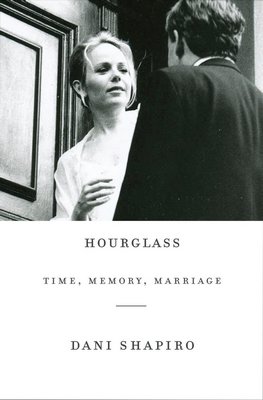
“My subject is memory,” said Charles Ryder in Evelyn Waugh’s “Brideshead Revisited.” In a very real sense, we are what we remember. And in trying to remember, we are giving shape to the formless and often haphazard strands of thought and being.
In literature, memoir is the genre of the moment. Dani Shapiro’s memoir “Hourglass: Time, Memory, Marriage” (Knopf, $22.95, 145 pp.) is one of the best I’ve read in a long time. Writers are told, “Write what you know.” One’s own life is the subject one knows the best. But we have to pick and choose what is significant in the welter of experience and sensation. In a sense, every life is many lives.
Not contented with one memoir, Ms. Shapiro has written four. Each one reflects a different aspect of, or a different time in, her life, a different thread in the fabric. This book is so good that I want to read the other three: “Slow Motion,” about her parents’ tragic car crash that upends her life, “Devotion,” about a religious crisis, and “Still Writing: The Perils and Pleasures of a Creative Life.”
It is almost invariably a crisis that spurs her to write a memoir; writing is a way to make sense of these crisis moments.
Ms. Shapiro has also written five novels, including “Black and White” and “Family History.” She has taught in the writing programs at Columbia, NYU, the New School, and Wesleyan University. She is the cofounder of the Sirenland Writers Conference in Positano, Italy.
“Hourglass” is about the mystery of time and its effects on her marriage, and individually on her and her husband, whom she identifies only as “M.” She and M have been married for 18 years. What began as a grand passion has been changed by time and circumstances, but there is no doubt about their deep mutual affection. Yet there are strains. There are financial fluctuations. Their house is in need of repair, but they don’t have the wherewithal to maintain it. A recurring character in the narrative is a woodpecker who is pecking at the siding of their house. He is at once an actual woodpecker, and a metaphor for the difficulties that beset them.
M. had been a successful war correspondent who had been a regular “talking head” on CNN and had “testified before the Senate Foreign Relations Committee.” “He is no longer on anyone’s Rolodex.” Ms. Shapiro stipulated when they married that he would no longer put himself in harm’s way. And she wonders if he resents her for asking it, though he has never indicated that he does.
There are the natural stresses of two writers each pursuing their craft under the same roof. There are fears about the health of their teenage son, who was born with a very rare seizure disorder. He is fine now, but he might have died and concern runs like an undercurrent in the narrative.
She is not as resilient as she used to be. She says, “The stumbles and falls; the lapses in judgment; the near misses; the could-haves. I’ve become convinced that our lives are shaped less by the mistakes we make than when we make them. There is less elasticity now. Less time to bounce back. And so I heed the urgent whisper and move with greater and greater deliberation. I hold my life with M. carefully in my hands like the faience pottery we brought back from our honeymoon long ago … We must be handled with care.”
“Hourglass” is a mature love story. Structurally, it is a kaleidoscope whose fragments of narrative move back and forth in time. It contains quotations from her diaries and passages from her reading—bits of a commonplace book that add an additional dimension.
Ms. Shapiro writes prose that is at once poetic and analytical. Its delicacy of expression is matched by its depth of feeling.
One of the key questions that one must ask of a book is, “Would I want to read it again?” To which the answer for “Hourglass” is, “Unquestionably.”